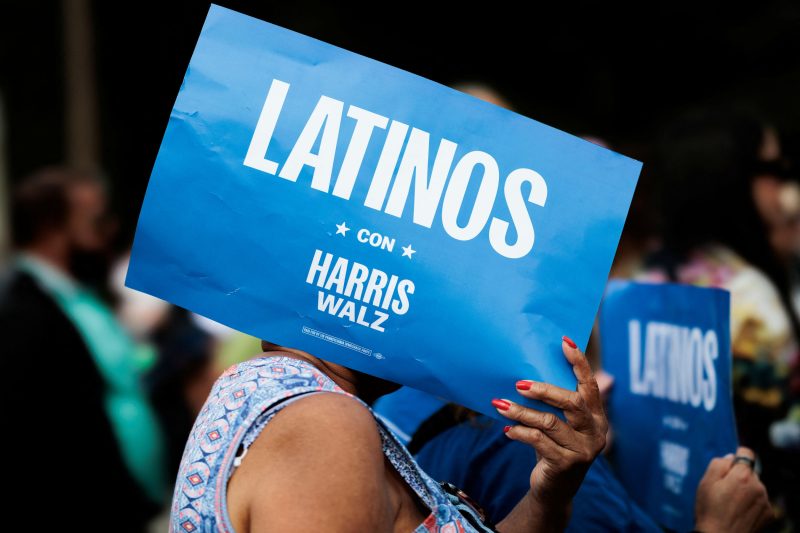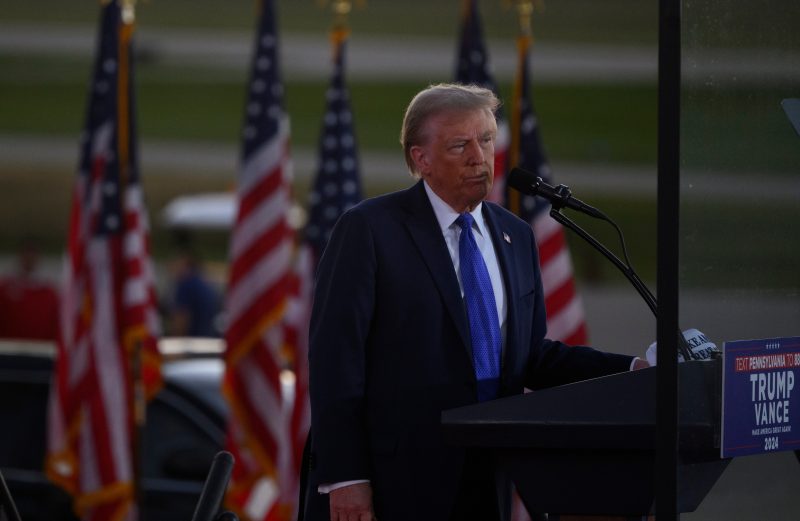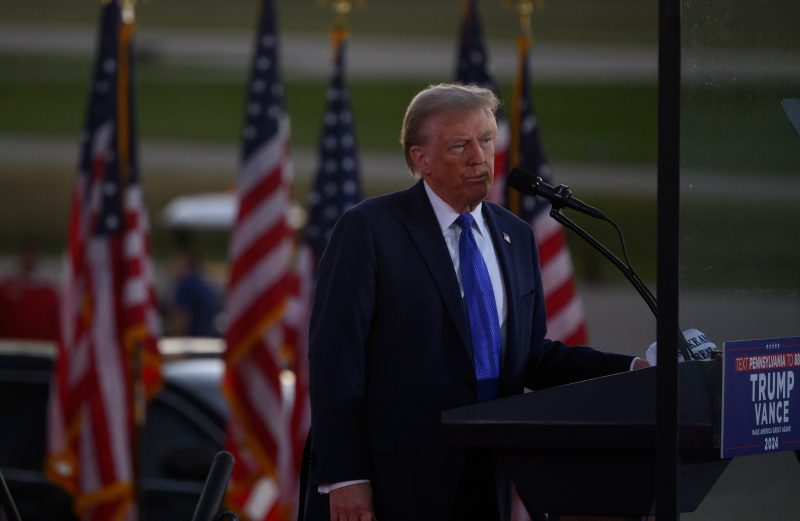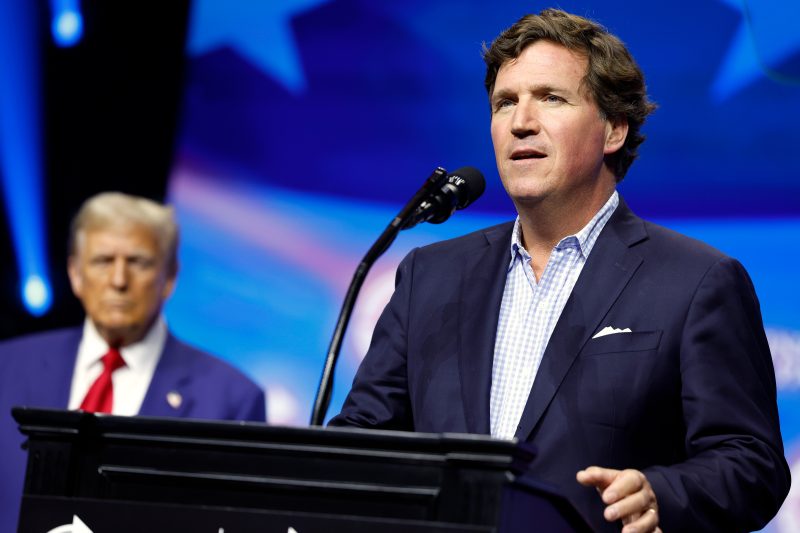
Harris pushes to recapture Latino support that fell under Biden
GLENDALE, Ariz. — Abe Calvillo dished out hundreds of tacos to feed hungry attendees at a recent watch party for a highly anticipated boxing match hosted by Rep. Ruben Gallego (D-Ariz.) and his Senate campaign.While cleaning up after running out of food, Calvillo said he was only able to keep his South Phoenix-based shop afloat this summer because Gallego and other Arizona Democrats had hired him to cater their political events.
“They’ve been supporting us, making sure we stay busy,” said Calvillo, who owns Que Suave Taco Shop, “and we will do anything for them.”
Well, anything except casting a vote for Vice President Kamala Harris.
Calvillo, 41, voted for Joe Biden in 2020. But for the first timein more than 20 years, he said he won’t vote for president.He’s frustrated with how the Biden-Harris administration has handled the economy, but he doesn’t support Donald Trump because of the former president’s stance on abortion — even though he believes Trump would be better for business owners.
“I’ve never felt like this before,” he said, shaking his head. Calvillo will support Gallego and other local candidates but plans to leave the top of his ballot blank.
In the final weeks leading up to the election, Harris is looking to shore up support from Latinos in key battleground states like Arizona, where they represent about 1 in 5 voters. Harris will campaign in Arizona on Friday and Nevada on Sunday — two swing states where Latinos make up significant shares of the electorates.
After Harris replaced Biden as the Democratic presidential nominee, many Latino voters were more upbeat about the party’s ticket, leaders and activists said.But the vice president hasn’t reached the level of support she needs from Latino voters and lags behind past Democratic candidates’ performances.
A recent New York Times/Siena poll found Harris leading Trump among Latinos in Arizona by eight points, as she garnered 49 percent of Hispanic likely voters to Trump’s 41 percent. In 2020, exit polls showed Biden winning this group by 24 points, with 61 percent of Latinos backing him compared with 37 percent who voted for Trump. Similarly, national polls show Harris trailing Biden’s 2020 performance with Latino voters.
Interviews with Latino voters in Arizona and Pennsylvania — another battleground state — show that the cost of living and state of the economy remain major concerns. Some also think Biden and Harris didn’t do enough to address immigration, with some on the left frustrated they did not deliver on implementing more compassionate policiesand others upset they haven’t been more aggressive in securing the southern border. Even if Latinos — like Calvillo — won’t vote for Trump, any erosion of support for Harris could make a difference in a razor-thin race.
Trump’s appeal with Latinos has largely rested on his pitch that the economy was stronger and the border more secure during his presidency. On the campaign trail, he has talked at length about life being better during his administration — a point some Latinos backing him referenced in interviews.
The Harris campaign — and Biden’s before that — has invested heavily in efforts to court Latino voters. Efforts include English- and Spanish-language television and radio ads targeting Latinos and hiring Latinos for key campaign positions. Harris campaign officials emphasized that they are looking at Latinos as a persuasion target and understand there is work to be done as they aggressively pursue voters.
“The Latino vote must be earned, and our campaign is putting in the work to reach Latinos wherever they are and drive home the stark choice Latinos face at the ballot box this election: between Vice President Harris’ plan to give everyone a fair shot at their American Dream and lower costs, and Trump’s broken promises, attacks on our health care, and a national sales tax on middle class families,” Maca Casado, the coalitions media director for the Harris campaign, said in a statement.
The campaign’s efforts have intensified in the final weeks before the Nov. 5 election, including a $3 million Spanish-language radio ad blitz, bilingual phone banking and campaign appearances from top Latino surrogates.
Carlos Odio, co-founder of Equis Research, a Democratic Latino research firm, said Biden lost some of the support he saw from Latino voters in 2020 — and while Harris has gained some ground, she hasn’t been able to fully recapture it. Now Harris faces “a lot of discontent that lingered for a very long period of time,” Odio said.
“You have some voters, who had already defected and just have not made their way back,” he said.
Odio said Harris is in a strong position with Latino voters — even if she doesn’t hit 2020 levels. She can afford to lose a couple points with Latino voters in some battleground areas and still win those states, he said. But that is tougher in Arizona, which Biden narrowly won in 2020 by fewer than 11,000 votes.
Young voters could also play a monumental role in determining the outcome of the election. And since the Latino population skews young, a sizable number of new voters could cast their first-ever ballots, Odio said. But there’s uncertainty aboutif and how they will vote.
Wilma Cruz, 58, of Reading, Pa., said she’s undecided but is leaning toward Harris because she traditionally votes for Democrats and associates them with being more supportive of Latinos and immigrants. Still, she is open to being courted by Trump.
“He’d really have to convince me. … He did a lot of things that didn’t sit well with our people,” she said, referring to the Trump administration delaying aid for Puerto Rico in the aftermath of Hurricane Maria, which left residents in the U.S. territory without power and clean water for months.
Cruz said she probably won’t make a decision until Election Day. “Vamos a ver. Como el dicho dice: Uno pone y Dios dispone,” she said, using the Spanish expression that “one plans but God decides.”
Francisco Alvarez, 58, of Yuma, Ariz., said he was registered as a Democrat for many years but rarely voted. Now, he said he switched parties and will vote for Trump.
“We need a better economy with more jobs, more people living off of work and not welfare. That’s what I want to see change,” said Alvarez, who runs an agricultural company.
Calvillosaid discontent over the economy and the costs associated with running a restaurant drove him to his decision. Though lowering inflation and interest rates have left some voters feeling better about the economy, he’s not among them. There’s nothing Harris or Trump can do to persuade him to vote in the presidential race, Calvillo said.
“Never in my life have I worked this hard, and I still can’t even make it,” said Calvillo, who also owns a barbershop.
Latino Democratic leaders have praised Harris for her outreach to Hispanic voters not being limited to the Southwest, but extending to states like Pennsylvania and North Carolina, where Latinos are a growing part of the electorate. They also applaud the campaign for recognizing the nuances among Latino populations in each state.
In Pennsylvania, Puerto Rican voters make up roughly half of the state’s eligible Latino voters. Over the weekend, Harris’s running mate, Minnesota Gov. Tim Walz, visited Bethlehem, Pa., which is located in the Lehigh Valley — an area with many Puerto Rican voters.
There, Walz talked about how he and Harris are “celebrating the collective contributions of Puerto Ricans and the entire Latino community” during Hispanic Heritage Month. He also recognized the anniversary of Hurricane Maria, which ravaged Puerto Rico in September 2017 and mentioned how Harris has pledged continued support of the island in its reconstruction.
The event was billed by the campaign as an “opportunity to organize among Latino communities” and part of a “historic effort to reach Latino voters.” A local Latino DJ played Luis Fonsi’s “Despacito,” Pitbull’s “Don’t Stop the Party,” and Bad Bunny’s “MIA.” It featured two famous Puerto Rican actors: Liza Colón-Zayas, who spoke about the power of Latino voters and Trump’s immigration policy of separating children from their parents, and Anthony Ramos, who urged attendees to support Harris and Walz.
But looking around the room, Carolina Velasquez, 41, said she felt that there were “not that many” Latino attendees in the crowd. The local seventh-grade teacher for English-language learners, who wore a shirt reading “Lehigh Valley Latina,” noted that the campaign needs to do more to reach Latinos.
“Why don’t more people know about this?” she asked.
In Harris, Velasquez said she sees a candidate “a lot of us minorities can see ourselves in.” Harris often talks about growing up in a middle-class family as the daughter of immigrants when engaging with Latino voters. Harris’s mother was an Indian immigrant, and her father came from Jamaica.
But Velasquezsaid the message isn’t reaching enough Latino voters because many in the community don’t feel the same as she does.
“The Latino vote right now it’s like, split in the middle,” Velasquez said. “I would say it’s right neck-and-neck.”



